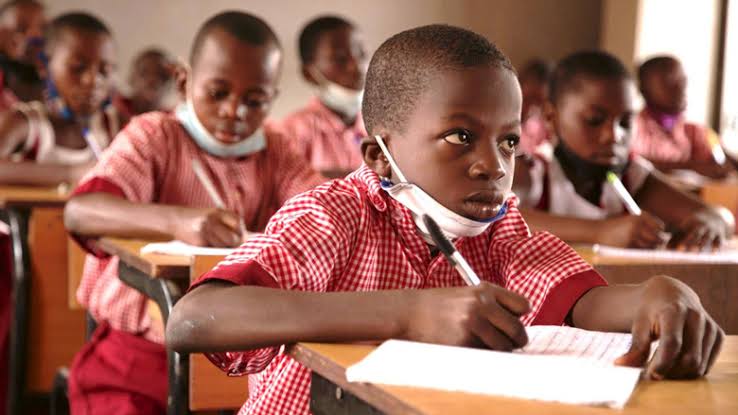The Impact of the Corona Pandemic on Education in Nigeria
The fight Against Corona pandemic erupted in late 2019 and became a disaster that rapidly affected traditional education in Nigeria.
With unprecedented scale and severity, the pandemic has forced the Government, education authorities, educators, students and parents completely into uncharted territories leading to significant disruptions in instruction and learning processes nationwide. This resulted in the government, who had to close all schools in the country in March 2020.
Initial Response and Transition to Remote Learning
When the first cases of the novel coronavirus were reported in Nigeria in early 2020, the government acted immediately to limit its spread by closing schools and universities.The shutdown affected millions of students that education systems failed to reach, from the primary to tertiary level,and an urgent question was how to ensure the effectiveness of a shift to remote learning?
Access to Technology
In Nigeria, technology and internet penetration level is low and this is huge barrier to achieving effective remote learning. Online classes and resources were available only to a select few that could afford it (Urban and Affluent class). But students in rural and underserved communities had little or no means. Many could not afford a device or internet connection, which prevented them from attending online classes, doing research and accessing online resources
Quality of Education
For example, access to finance and teachers who were not adequately prepared or trained to teach in an online environment was a major setback in curbing the learning curve.
Furthermore, the students from the rich families were able to benefit more from the online resources than those from poor families due to digital divide.
Loss of Learning Time
As part of measures to limit the spread of COVID-19 schools were shut down for months, while the academic calendar was adjusted, leading to loss of valuable learning time. Quite a number of students bore class disruptions and this might likely affect their future prospects and career path.
Socioeconomic Impacts and Vulnerable Populations
The pandemic disproportionately affected vulnerable populations in Nigeria, including children from low-income families, girls, children with disabilities, and those living in rural or conflict-affected areas. These groups faced heightened risks of dropping out of school due to economic hardships, lack of access to digital learning tools, or increased domestic responsibilities, such as caregiving or income generation.
Economic Hardships
1. Financial Strain on Families
Many families experienced economic hardships during the pandemic, with job losses, reduced incomes, and increased poverty rates affecting their ability to support their children's education. Some parents prioritized immediate financial needs over educational expenses, further widening educational disparities.
2. Child Labor and Early Marriages
School closures increased the risk of children engaging in child labor or early marriages, particularly girls. Without the protective environment of schools, vulnerable children were more susceptible to exploitation and harmful practices that could derail their education and future opportunities.
Challenges Faced by Higher Education Institutions
Nigerian universities and tertiary institutions also grappled with the impact of the pandemic, which disrupted academic calendars, postponed examinations, and challenged traditional teaching methods. The closure of campuses and restrictions on gatherings forced universities to adopt online learning platforms, albeit with varying degrees of success due to infrastructure limitations and faculty preparedness.
Financial Strain and Sustainability
1. Revenue Loss
Universities heavily reliant on tuition fees and other sources of income faced financial strains as student enrollments fluctuated and funding sources dwindled. This financial instability threatened institutional sustainability and raised concerns about the quality of education and research outputs.
2. Adaptation of Teaching Methods
The sudden shift to online education prompted universities to adapt their teaching methods and invest in digital infrastructure. However, the rapid transition highlighted disparities in digital literacy among students and faculty, as well as the need for continuous professional development to enhance online teaching effectiveness.
Government Interventions and Mitigation Strategies
In response to the challenges posed by the COVID-19 pandemic, the Nigerian government and educational stakeholders implemented various interventions and mitigation strategies to support continuity of learning and mitigate the impact on education:
1. Radio and TV Broadcasts: The government collaborated with broadcasters to air educational programs on radio and television, reaching remote and marginalized communities with limited internet access.
2. Distribution of Learning Materials: Educational materials, including textbooks and workbooks, were distributed to students in underserved areas to facilitate home-based learning during school closures.
3. Capacity Building for Teachers: Training programs and workshops were organized to equip teachers with digital skills and pedagogical strategies for online teaching and learning.
4. Phased Reopening of Schools: As COVID-19 cases fluctuated, schools were gradually reopened with safety protocols in place to protect students, teachers, and staff. Hybrid learning models combining online and face-to-face classes were adopted to minimize disruptions and ensure continuity of education.
Future Outlook and Lessons Learned
As Nigeria and the world continue to navigate the COVID-19 pandemic, the education sector faces ongoing challenges and opportunities for transformation:
1. Investment in Digital Infrastructure: Enhancing access to affordable internet connectivity and digital devices is essential to bridge the digital divide and ensure inclusive education for all students.
2. Resilience and Adaptability: Building resilience in education systems through flexible learning models, blended approaches, and contingency plans will prepare institutions to respond effectively to future crises or disruptions.
3. Equitable Access to Education: Prioritizing equity in education by addressing socioeconomic disparities, supporting vulnerable populations, and promoting gender equality is crucial for sustainable development and inclusive growth.
4. Collaboration and Partnership: Strengthening partnerships between government agencies, educational institutions, civil society organizations, and the private sector is essential for mobilizing resources, sharing best practices, and driving innovation in education delivery.
